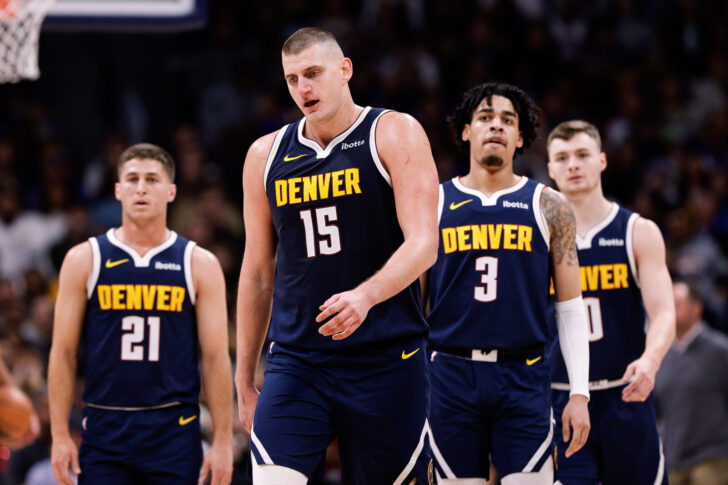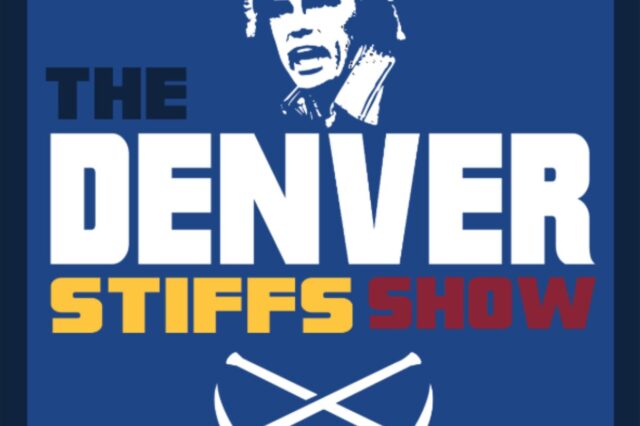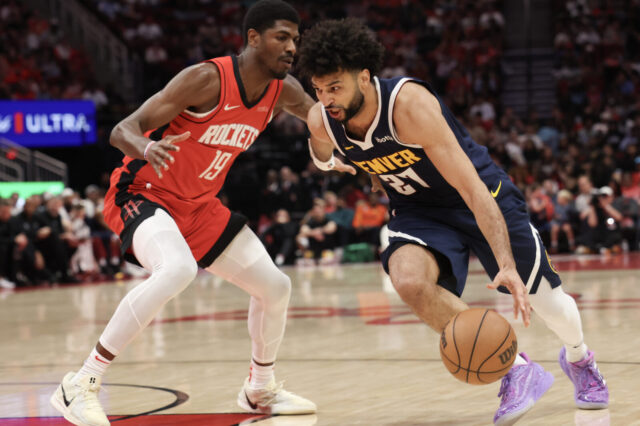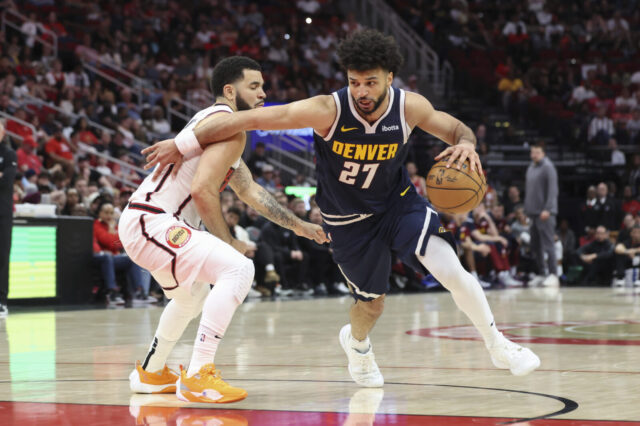As soon as Jamal Murray left the game in the second quarter as the Denver Nuggets were playing the Chicago Bulls on November 4th with a strained hamstring I had one single, solitary thought:
Oh crap, the Nuggets youth can’t withstand this kind of blow.
This seems, at first blush, like a fatalistic 2015 ass kind of thought. I get that completely but we must take into account that what the Nuggets are attempting to do right now — threading the needle between a powerful starting lineup and an extremely young (in NBA years) bench — is very unusual in NBA history for a team that just won a championship. Even the oft referenced (by the Nuggets) mid-2000’s San Antonio Spurs always had gravy train veterans to help supplement their bench on the off years they didn’t win a title.
The Nuggets relative youth at the back end of their roster is one thing that concerned me greatly for the cause of repeating coming into this year. As I said in my podcast with The Bulwark’s Tim Miller last month it was a philosophical acknowledgment from the Nuggets. When Nuggets head decision maker Calvin Booth said that ‘repeating’ wasn’t necessarily the Nuggets goal both on Media Day and to The Ringer’s Kevin O’Connor the team is telling you that they are potentially flattening the curve.
What does that mean, Jeff?
Simply put: The greater percentage of your roster is occupied by rookies or second year players, the more they need to play to develop, the more your peak is flattened due to said development. Each young player needs reps on an NBA squad to improve, and those reps come with some real bumps; some real sacrifice. Thus, reducing your margin for error. It is exceedingly hard to develop and contend and these concepts do not rest easy together. It’s a pretty large miracle that the Nuggets were able to get Christian Braun as much playing time as they did last season and win. That Finals victory is owed in significant part to the best move of the still nascent Booth era with the Nuggets: the signing of Bruce Brown (who left for the Indiana Pacers this last offseason).
Our old friend George Karl used to say that injuries are significant because you have to shuffle a roster more than you have to replace an individual player. It is here where I believe the front office left head coach Michael Malone with limited options to mitigate the damage very specifically to the bench when someone like Murray gets injured. Reggie Jackson is the most obvious candidate to replace Jamal, but that left second year rookie Colin Gillespie running a second unit consisting of Braun, Zeke Nnaji, Peyton Watson and Julian Strawther. Two rookies, two second year players and a fourth year player who’s been oft injured and or not in the lineup. Do you just play Justin Holliday as a veteran presence in the second unit and sacrifice minutes with Strawther? I don’t envy Malone these decisions.
The problem doesn’t get easier with Julian Pickett as your second unit point guard. Still a rookie. As I’ve said before, just because you’re an old rookie doesn’t mean you aren’t a rookie. You still got some stuff to learn.
Does this mean Malone moves Jackson back to the bench and moves (insert rookie) into the starting lineup? Maybe. However that doesn’t solve the fundamental problem of youth. All players who have shown promise but are young as hell in NBA years and in order to get better they need to play. However, that comes at a cost.
This isn’t to be alarmist, of course. The Nuggets as of this writing are 8-2 and have some good wins even after Murray went down with his injury. Nikola Jokic is amazing. Michael Porter Jr and Aaron Gordon are stepping up and Kentavious Caldwell-Pope is picking up where he left off. Yet, the issue will remain all year even when Jamal comes back. How do you give crucial development to rookie talent to develop them on a team that ostensibly has championship aspirations? What we saw against the Houston Rockets — the bench players scoring a combined 8 points and quite frankly looking completely lost — is a function of youth that you can’t wish away, even if they are old rookies. They need to play and play consistent minutes to get better, but you will have to live with games like the one against the Rockets.
The Nuggets going all-in on old rookies is a novel approach for a team that just won a title. This is a concept that has yet to be truly tested. To be honest, I don’t really care for it because I’m old school. Windows close quickly in this league and the concept of ‘sustainability’ more often than not is a function of good fortune. We have to remember the Spurs drafted Tim Duncan when they already had top 50 player in David Robinson and Duncan subsequently played for 20 years. The Golden State Warriors built their roster when all-timer Steph Curry was on a super affordable contract because of his ankle issues. Then they signed Kevin Durant during a once in a lifetime cap spike.
The question we have to ask ourselves is what is head coach Michael Malone willing to live with in terms of development?
Indeed, prior to Jamal’s injury the bench ‘looked’ better than it had even last year with Brown and Jeff Green still in the fold. How much of that is due to early season NBA and how much was real? The eye test can be deceiving at times but so can stats.
The Nuggets decision to go all in on youth such as they have is one that can be debated throughout this year. Flattening the curve for sustainability is a risk and clearly a gamble for the future. With the news that Michael Malone signed a (well deserved) two year extension on his deal it seems like the front office doesn’t want to think short term in general.
Maybe the Nuggets have been telling us something?



